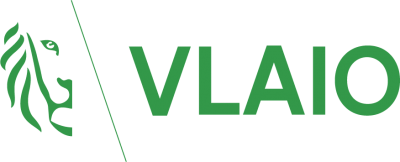Topics
We organise our actions in six thematic & strategic agendas:
Strategic Agendas:
Bio-economy
Circular Construction
Chemicals/Plastics
Manufacturing Industry
Food Chain
Water Cycles
Seven leverages provide additional support:
Leverage effects:
Lever Policy Instruments
Lever Circular Procurement
Lever Communication
Lever Innovation & Entrepreneurship
Lever Financing
Lever Jobs & Skills
Lever Research
What, why and how?
Why are we pursuing a circular economy?
Future visions 2050
How do we see our circular future?
About our management
Who steers what at Flanders Circular?
Circular construction: working together, the key to success
Cooperatives around circular materials and systems offer great added value
Circular innovation is hard to find in the construction world: implementers and investors prefer to avoid risks associated with new building techniques and often fall back on traditional building solutions. In addition, the individual interests of the various building disciplines are predominantly taken as a starting point, resulting in little trust between different actors within a (re)construction project. Therefore, it is not always clear what individual and social opportunities circular building has to offer.
Through this project, Jansen by ODS, Bureau Bouwtechniek, Lootens, BUURMAN Antwerp and Franck want to change this. Thus, we first thoroughly studied the various opportunities (joint business, more reuse, temporary storage, cooperation between materials hubs ...) and bottlenecks (low efficiency of selective demolition, poor available information of used components, complex logistical planning ...) of such cooperation.
The cooperative is supported by three different materials hubs: the Circular Steel hub led by Jansen by ODS and Lootens, the materials hall with wood products by BUURMAN and the facing brick site by Franck.
We worked on several cases to test the process of urban mining, the digital and logistics aspects, the harvest map and the repurposing of the secondary materials cycle.
Kloeckner Metals Belgium NV
Partners Kloeckner Metals Belgium & Jansen AG Lootens, Turnhout BV, Bureau Bouwtechniek NV, Franck BV, BUURMAN Antwerpen vzw
Sectors
Themes
Organisations
Website
MOST IMPORTANT
RESULTS
- We conducted several cases in the role of materials director. Reuse of materials is a key R-strategy within the circular R-ladder that we use as our main goal in this project. Other R-principles were also tested and weighed.
- We conducted a test case with new digital techniques around urban mining. The final product is a 'Reverse BIM model' that architects can use as a starting point for new circular projects.
- We identified and studied possible new roles for the circular labour market, such as materials scout, materials director and material valuator.
- We built a digital platform (in terms of structure and supply) and tested an initial materials flow. This allowed us to estimate the actual impact to motivate the market to use it.
MOST IMPORTANT
LESSONS LEARNED
- Circularity is often even more expensive. For a case to be completed, or for a relevant reference to be realised, a lot of water has to be added or alternative ways of compensation have to be sought. It is important to consider the Total Cost of Ownership.
- If circularity is not properly prescribed in the tender text, little is likely to come of it. It is important to have the architect draw up good circular specifications, including the aspect of temporariness.
- Standardisation of building products is one of the possible solutions to keep the cost price of circular products or services affordable.
- Quality assurance and product liability are still bottlenecks that require attention. Especially in the transaction of ownership or building components between two buildings or owners, there are still some legal pitfalls that we need to investigate further.
WHAT DOES
THE FUTURE HOLD?
Our report shows opportunities, obstacles and possible solutions. Collaboration on circular building materials and systems is a great ambition and a continuous process of learning, testing and reflecting.
Today, two partners are considering the follow-up and the feedback on their plans is already hopeful.
Through the Harvest Bay Foundation, we want to safeguard the knowledge that was gained. It is very diverse and transcends everyone's specialism, and also offers room for biobased solutions. The new projects are already presenting themselves, so we can in fact already start. The idea is to set up a cooperative company for this purpose, initially as a start-up, in which recently graduated architecture and commercial science students will also have a role. The necessary funding for this is currently being worked out. It is already clear that the supporting digital platform will be complex to scale up, and will also involve the necessary costs.
















